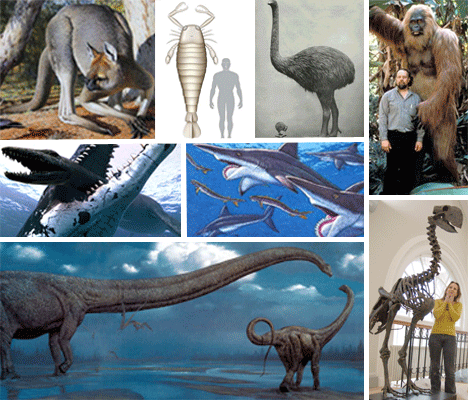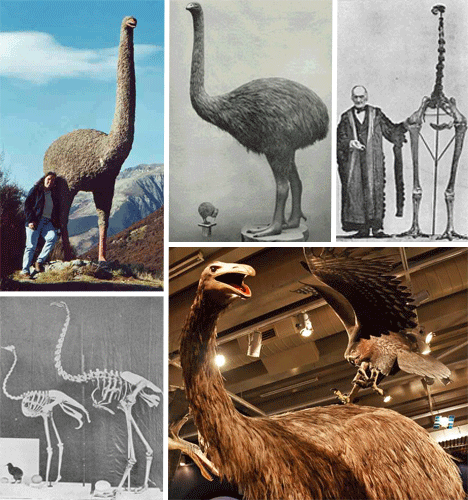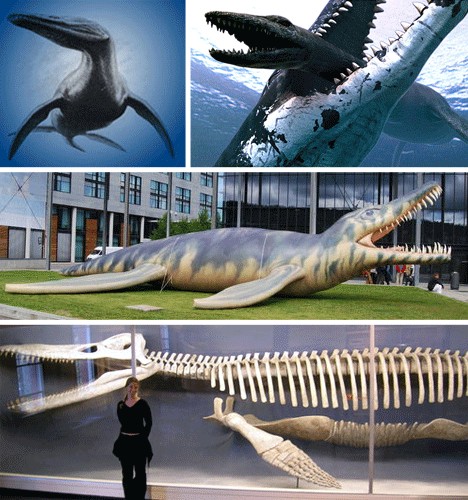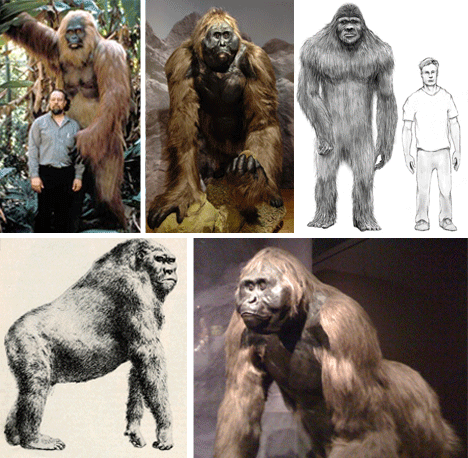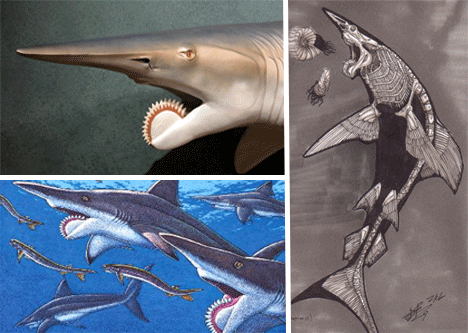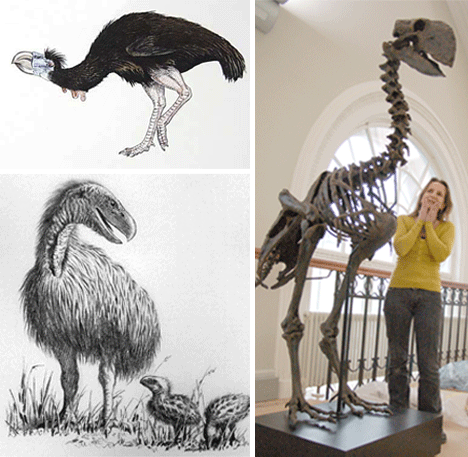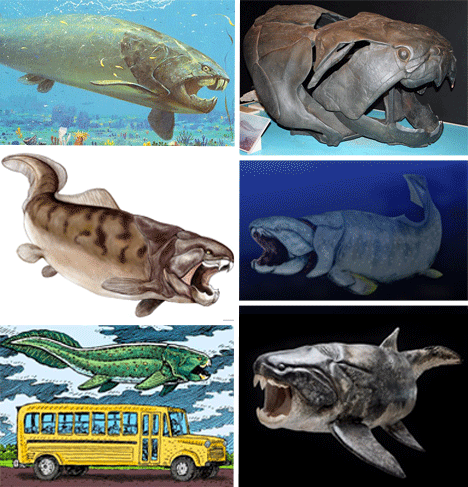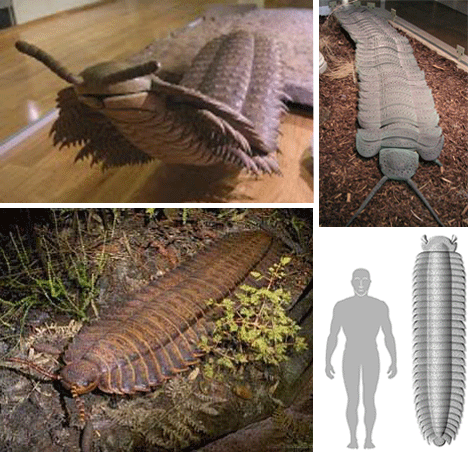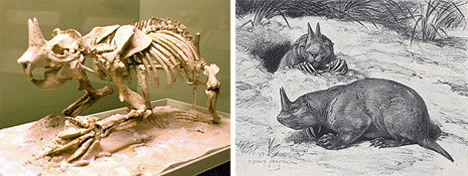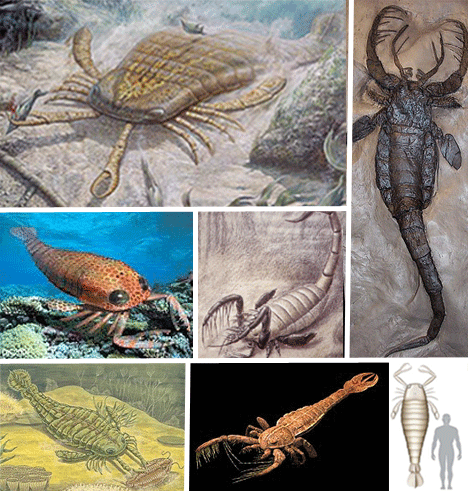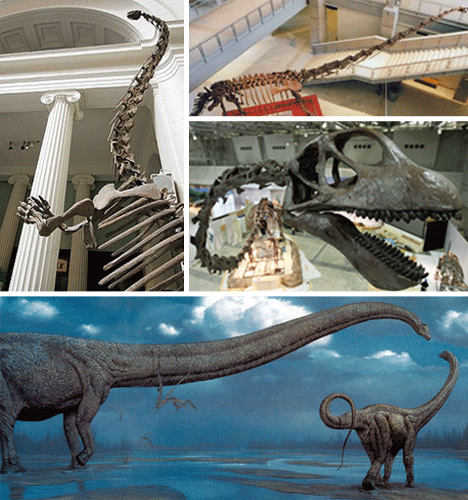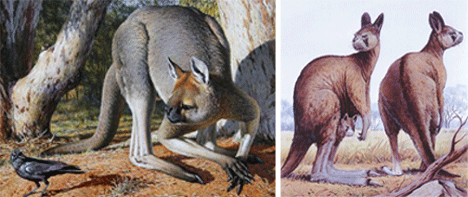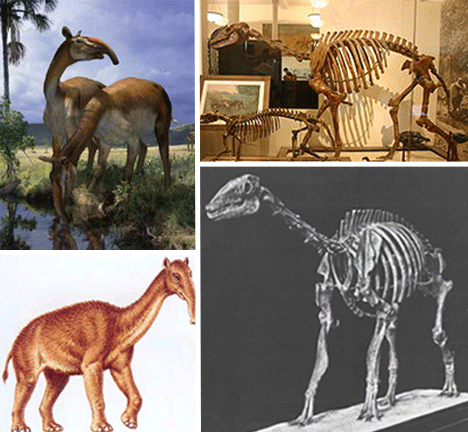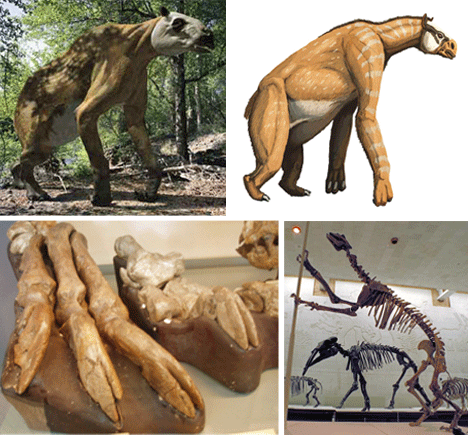Thankfully, evolution has most recently tended to reward creatures for strong thinking abilities, as it’s allowed us to rise to the top of the food chain. If we’d been alive in earlier eras, however, we may not have been so lucky. Different times called for different attributes, and there was a time when size and ferocity were a species’ most important quality. Here’s an exploration of 14 of the largest, strongest, and in some cases, strangest, creatures that have called our planet home:
(Images via sumner, copyrighted, tenth medieval, wapedia)
The Moa were flightless birds that resided in New Zealand as recently as 1500 AD. Hunted to extinction by Maori tribesmen, this bird’s dominant physical presence wasn’t enough to fight off sharpened spears. At 12 feet in height and over 500 pounds in mass, the Moa make the modern Ostritch seem diminutive.
(Images via sedgwick museum, moblog , ny times, plesiosaur)
Pliosaurs haunted the world’s oceans, attacking with intense power and speed. With short necks and huge jaws, they were killing machines. The largest Pliosaur skeleton was an incredible 52 feet long, with its head making up almost 8 feet of its total length.
(Images via sasquatchers, free republic, unexplained mysteries, crypto mundo, API)
A possible inspiration for King Kong, Gigantopithecus’ appearance resembled modern day apes, only it was much, much larger. The heftiest ape in history, they could top out at nearly 10 feet and weigh over 1,000 pounds. Gigantophithecus was a distant relative of the modern Orangutan, so most artistic depictions take this into account.
(Images via national geographic, WSU, scifi meshes)
Whorl Sharks were similar to their modern cousins despite jetting along almost 300 million years ago. While modern sharks have rows of serrated teeth ready to replace any that fall out, the whorl shark had an interesting lower jaw that looked like a circular saw, where newer teeth would push older teeth further along the line. There’s some debate about the placement of the tooth structure, but regardless of its location in the mouth or deeper in the throat, it had a startlingly unique appearance.
(Images via fmnh, fogato)
Gastornis, formerly known as Diatryma, is another horrifically large flightless bird. The most terrifying aspect of this animal is the fact that its beak implies it was carnivorous.
(Images via uta, atw, deep sea news, dinosaur pictures, hmnh, dinocasts)
Unlike sharks, that have survived for over 400 million years, Dunkleosteus had a short run of 50 million years. They would get up to 30 feet in length and weigh over 4 tons. They were the last of their kind, as we’ve been unable to find any closely related descendants.
(Images via aljazeera)
Little needs to be said about Titanoboa beyond this: 50 feet long and over 2,500 pounds. Like a titanic exaggeration of the modern boa, be thankful this snake went extinct nearly 58 million years ago.
(Images via yale, avph, charlie’s playhouse)
Arthropleura armata was the worst nightmare of any homeowner: an 8 and a half foot long bug. Similar in appearance to the modern centipede, it was one of the first invertebrates on land, and as such, most likely had little to no predators. Thankfully, they lived well over 300 million years ago, and won’t show up in your hallway any time soon.
Even the smallest creatures deserve mention, and the horned gopher (Ceratogaulus Rhinoceros) is no exception. As the smallest mammal to ever have horns, they should have at least a little recognition. It was originally thought the horns were meant for digging, but the consensus now seems to be that they were used for defense.
(Images via sitioco, cope podo, cool fun blog, mediterraneo diving, naturalist)
Jaekelopterus Rhenaniae is similar to Arthropleuria, only it lived in the ocean. At over 8 feet in length, this “sea scropion” (only in appearance) makes the largest lobsters seem like toys. It crawled along the ocean floors nearly 390 million years ago.
(Images via encyclo123, wikipedia, exhibitsrex, zimbio)
Mamenchisaurus looks much like another famous dinosuar, Apatosaurus (formerly known as Brontosaurus), and is similar except for one odd difference: neck length. Their necks were up to 46 feet in length and made up 50% of their full body length. They lived nearly 150 million years ago and were entirely herbivorous.
(Images via times online, nature)
What’s more fun than a kangaroo? A 10 foot tall, 500 pound kangaroo. Procoptodon Goliah was a marsupial just like its modern cousins, and had similar features, but with a shorter face and slightly different feet. They were alive as recently as 18,000 years ago and their demise is attributed to human activity.
(Images via abc, avph, absolute astronomy, darwin online)
Macrauchenia lived around 20,000 years ago and were first discovered by Charles Darwin on his famous voyage on the Beagle. These creatures seem like a grab bag of different animals, with a small trunk and a body reminiscent of a camel. Too large to be fast enough, and too small to frighten off potential predators, they never had much of a chance.
(Images via ucmp, blogol, wikimedia)
Chalicotherium was a giant beast that walked on its back feet and knuckles, and used its long arms to pull down high branches for feeding. They were most likely slow and spent a majority of their time consuming leaves. Their only protection was their size and heavy claws on their forelegs, both of which would deter modern predators, but were unexceptional at the time.
